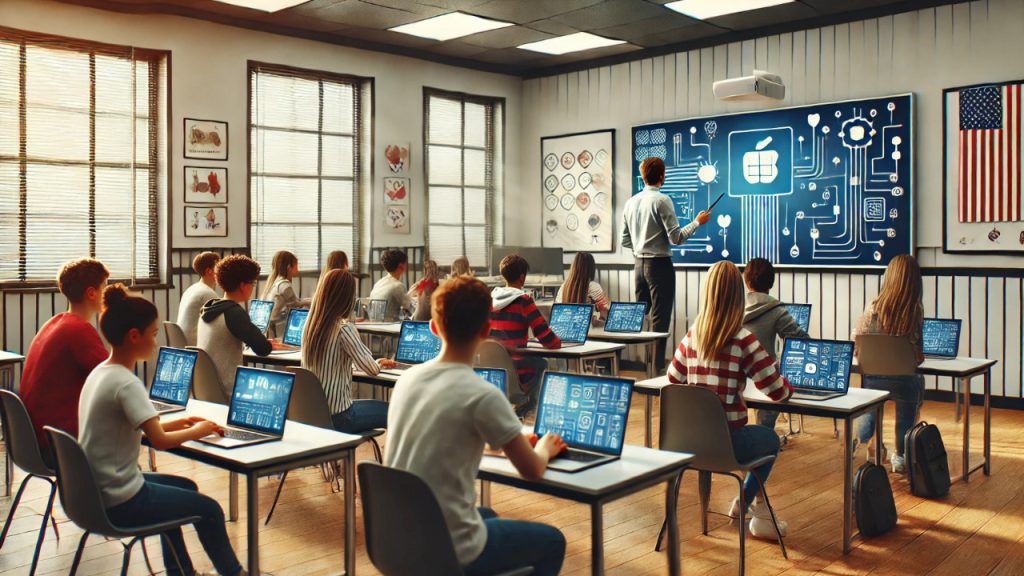The Pros and Cons of Technology in the Classroom: A Balanced Perspective
The Pros and Cons of Technology in the Classroom: A Balanced Perspective
Technology has changed the scenario of education in a very big way. As the technology revolution transformed society over the past 30 years, it also transformed the classroom, leading to new learning tools, resources, and methods to support students and teachers. But it has not come without its challenges. Although technology is seen as an integral part of modern education, others have voiced concerns about its negative impact. Through this article, we share the pros and cons of technology in the classroom; thus, providing a two-sided view of technology role with education.
The Pros of Technology in the Classroom
1. Enhanced Learning Experiences
So in this post, we’ll be listing some of the key benefits of technology in the classroom for students, teachers and parents alike. Using digital tools — including interactive whiteboards, educational apps, and online platforms — enables students to explore content in interesting and interactive ways. These technologies can help different types of learners, visual, auditory, tactile or kinesthetic information retention.
For example, services such as Google Classroom, Kahoot!, and Edpuzzle to promote student engagement through quizzes, videos, and discussions. In addition, these resources enhance the learning experience, as well as ensure that students have a full grasp of the content.
2. Access to a Wealth of Information
And we pick up all kinds of information based on what we have to read, tap and click. Technology opens the doors for students to explore endless resources outside of the classroom. Like they might research online, or explore educational videos, or visit digital libraries, teachers can see that any learner has instant access that connects them with an international flow of knowledge. Students can go deeper into subjects of interest, making learning more well-rounded.
With access to digital resources, students are able to find up-to-date information, allowing them to learn the most current facts, trends and research in fields such as science, technology and literature.
3. Personalized Learning
Technology enables personalized and adaptive learning. Learning management systems (LMS) and AI-powered software, for example, can track students’ progress, identify where they are lagging behind, and deliver customized content or exercises. This approach allows students to make progress through personalized learning paths which ensure that each student is progressing at their own speed and according to their own needs.
” For example, platforms such as Khan Academy grant students a personalized dashboard with avatars to help them work through lessons at their own pace. This can be particularly useful for students with varying learning needs, including those with disabilities or language barriers.
4. Collaboration and Communication
Technology aids in the communication and collaboration of students and teachers as they may work with peers from other school districts or even countries. Teamwork: Online tools for video conferencing, group chats, and collaborative document editing enable teamwork and collaboration in the learning process for students — equally regardless of the physical distance.
The use of tools such as MicrosoftTeams, Slack, and Google Docs allow students to collaborate on projects, ideas, and feedback in real time. This creates a sense of community and prepares students for the collaborative working environments they will be in in their future careers.
5. Preparation for Future Careers
Integrating technology into the classroom prepares students for the world that is becoming more and more digitized outside of school, post-graduation. Coding, digital literacy, and data literacy are the core skills required in a majority of industries nowadays. By incorporating technology in the classroom early, students will malleable skills, which they will have a competitive advantage in the workforce.
We also teach students about emerging fields in the field of technology, such as artificial intelligence, robotics, and digital design, providing students the opportunity to prepare for future careers.
The Cons of Technology in the Classroom
1. Distraction and Reduced Focus
One of the most common concerns regarding technology in the classroom is that it can become a significant distraction. With easy access to social media, games, and other non-educational websites, students may be tempted to divert their attention away from the lesson. This can result in decreased focus, lower academic performance, and a lack of engagement.
Moreover, studies have shown that multitasking with digital devices can impair memory retention and comprehension, leading to shallow learning. The constant influx of notifications from devices can also hinder students’ ability to concentrate for extended periods, which is critical for deep learning.
2. Inequity and Digital Divide
While technology can provide enhanced learning opportunities, not all students have equal access to it. Socioeconomic disparities can create a digital divide, where students from lower-income families may not have the necessary devices or reliable internet connections to fully participate in technology-based learning. This gap can exacerbate existing educational inequalities, leaving some students at a disadvantage.
Even within schools, not all institutions are equally equipped with the latest technology or technical support, making it difficult for teachers to integrate technology effectively in the classroom.
3. Depersonalization of Learning
While technology can make learning more engaging and efficient, it can also lead to a depersonalized educational experience. In a classroom heavily reliant on digital tools, face-to-face interaction between teachers and students may decrease. This can reduce the development of important social and emotional skills, as well as limit opportunities for personalized mentorship and feedback.
Furthermore, excessive screen time can impact students’ social development, as it may reduce opportunities for in-person communication and interpersonal skill-building.
4. Over-reliance on Technology
There is a risk that educators and students may become too reliant on technology, leading to a loss of traditional skills. For example, reliance on calculators and educational apps may hinder students’ ability to perform basic arithmetic or problem-solving tasks without digital assistance. Similarly, excessive use of online resources could diminish critical thinking skills, as students may lean more on readily available information rather than engaging in thoughtful analysis or original research.
Teachers also risk becoming too dependent on technology for lesson delivery, which can reduce their flexibility and adaptability in the classroom. If technical issues arise or equipment fails, it may disrupt the learning process, leaving both educators and students ill-prepared.
5. Privacy and Security Concerns
The integration of technology into education raises significant concerns about data privacy and security. Many educational platforms require students to create accounts and share personal information, making them vulnerable to data breaches or cyberattacks. Additionally, the use of tracking software to monitor student progress can raise ethical concerns about surveillance and the protection of sensitive data.
Parents and educators must be vigilant in ensuring that the digital tools used in classrooms comply with privacy laws and that students’ personal information is safeguarded.
Conclusion
In conclusion, technology offers numerous benefits in the classroom, including enhanced learning experiences, access to a wealth of information, personalized instruction, and improved collaboration. However, it also presents significant challenges, such as distractions, inequities, and potential over-reliance on digital tools. The key to successful integration of technology in the classroom lies in striking a balance—leveraging the advantages of technology while mitigating its drawbacks. By fostering responsible use, providing equitable access, and ensuring that technology complements, rather than replaces, traditional teaching methods, we can harness the full potential of digital tools to create a more effective and inclusive learning environment.
Ultimately, technology should be seen as a tool to enhance education, not as a substitute for the human element that is essential to teaching and learning.







